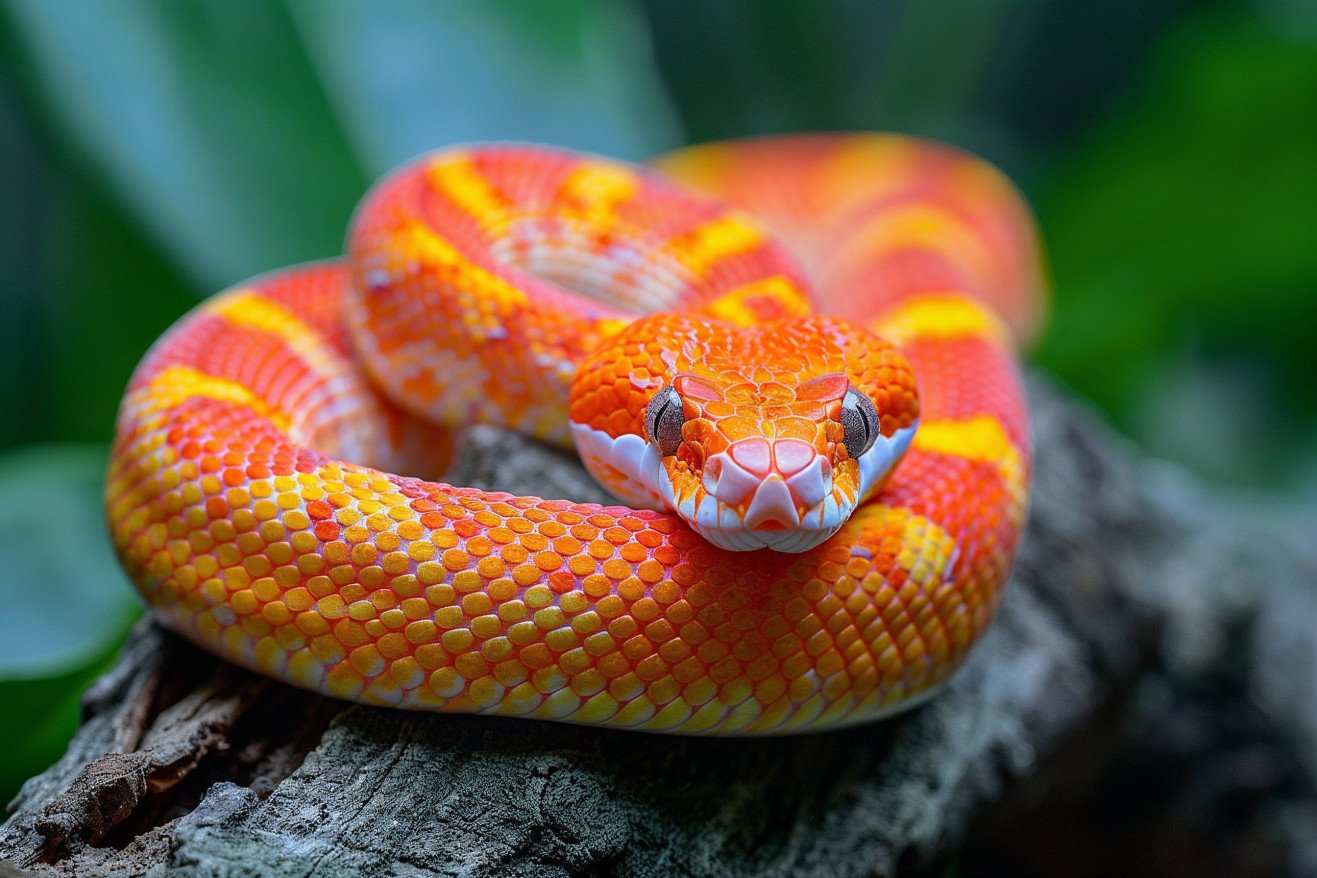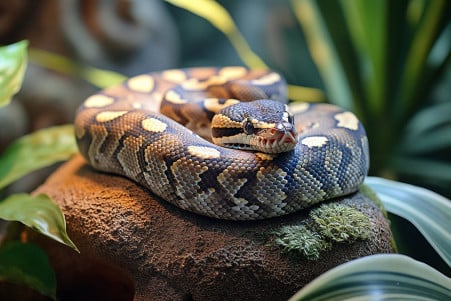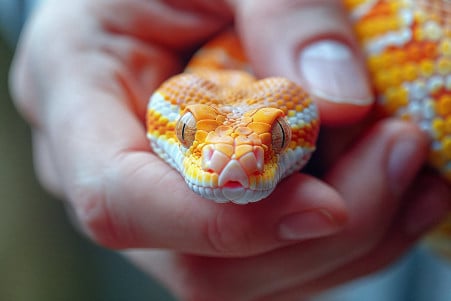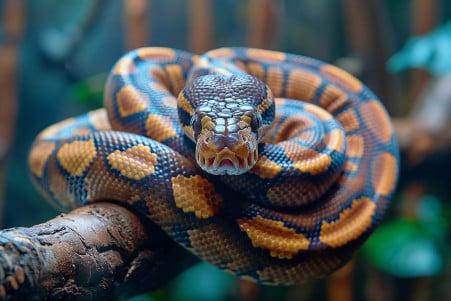How Long Do Corn Snakes Live? Exploring Their Longevity
2 April 2024 • Updated 2 April 2024

Whether you're thinking about getting a corn snake or you already have one, it's important to know how long you can expect to care for your pet. With the right food, habitat, and care, corn snakes can live to be between 6 and 15 years old in captivity, although some have been known to live as long as 23 years.
In this article, we'll take a deep dive into research from the fields of herpetology and veterinary medicine to understand what determines the lifespan of corn snakes. We'll discuss the most important factors that impact how long corn snakes live, how you can help your pet live a longer life, and the difference between the lifespan of wild corn snakes and those kept as pets. By the time you finish, you'll have all the information you need to make sure your corn snake lives a long, healthy life.
How long do corn snakes live?
Things That Impact Corn Snake Lifespan
Genetics are a big factor in how long a corn snake will live, as some bloodlines are known to live longer than others. That said, while the average lifespan of a corn snake in captivity is about 15 to 20 years, according to XYZReptiles, the right habitat setup is necessary to ensure that they live as long as they can.
This includes making sure that the temperature is right, with a warm basking area that's about 90°F and a cooler hide that's in the 70s°F, according to ReptiFiles. The humidity should be between 50-70% and there should be plenty of hiding places. In addition, a good diet of prey that's the right size and vitamin D3/calcium supplementation can help ensure that they live as long as possible.
It's also important to make sure that you're keeping an eye on their health. Weighing them weekly and keeping a log can help you catch any issues early, when they can be treated by a vet that specializes in reptiles, such as mouth rot, parasites, or respiratory infections. Things like stress from handling, exposure to toxins, and unsanitary living conditions can all shorten a corn snake's life. However, if you make sure to take good care of them and meet their needs, they can live for well over a decade and be a great pet.
Understanding Nutritional Requirements for Optimal Health
Corn snakes are obligate carnivores, so they need to eat whole animal prey to get the nutrients they need. Zen Habitats suggests that prey should be no more than 1.5 times the width of the snake or about 10% of the snake's body weight. Mice, rats, quail, and small lizards are all good options.
Feeding frequency depends on the snake's age. According to ReptiFiles, hatchlings and juveniles should be fed every 5-7 days, while adults can be fed every 14-21 days. Calcium and vitamin D3 supplements can be given occasionally to help make sure the snake is getting all the nutrients it needs and to support healthy bone growth.
In addition to a healthy diet, it's important to make sure the snake has access to fresh water. Snakes get most of the water they need from the moisture in their food, but they can also absorb water through their skin. As explained by PetMD, the water bowl should be big and shallow enough that the snake can soak in it if it wants. Making sure the snake is well-fed and hydrated is important for making sure it lives a long, healthy life in captivity.
Identifying and Dealing With Health Problems
Corn snakes are prone to a number of health problems that, if not addressed, can shorten their lifespan. As noted by VCA Animal Hospitals, these issues include infectious stomatitis (mouth rot), intestinal and skin parasites, skin infections, respiratory diseases, septicemia, and viral diseases such as inclusion body disease.
Signs of these health problems include mouth lesions, diarrhea, difficulty breathing, lethargy, loss of appetite, and neurological symptoms such as a lack of righting reflex. ReptiFiles suggests that weekly weighing and keeping a log of your snake's weight can help you catch problems early, as sudden weight loss is often the first sign of a health issue. Proper habitat maintenance and quarantining new snakes can also help reduce the risk of disease.
If you suspect your snake is sick, it's important to seek immediate care from a vet who specializes in reptiles. As explained by My Family Vets, health problems like mouth rot, constipation, viral infections, mites, and respiratory infections need to be treated as soon as possible to ensure the snake's health. By keeping a close eye on your snake and making sure they get the care they need, you can help make sure they live a long and healthy life.
Proper Handling Techniques for Stress Reduction
Proper handling is important to reduce stress in corn snakes, as stress can have a negative impact on their overall health and lifespan. As XYZReptiles explains, this starts with using a snake hook or another light tool to tap the snake before you pick it up, which alerts the snake that you are about to handle it and prevents it from being startled, which can lead to a defensive reaction.
When you go to pick up the snake, make sure you come in from the side, not from above, and then support the snake's body in the middle, avoiding the head and tail. ReptiFiles suggests supporting as much of the snake's body as you can to help the snake feel more secure. If the snake starts to exhibit signs of stress, like musking, defecating, hissing, or tail shaking, it's time to put it back in its enclosure.
To maintain a calm, trusting relationship with your pet, keep handling sessions to 1-2 times a week, and avoid handling the snake during shedding, for 48 hours after feeding, or when young children are around and not being supervised. As XYZReptiles points out, if you make sure to provide the right habitat and minimize stress, you can help your corn snake live a long, healthy life in your care.
Setting Up the Perfect Habitat
Ensuring that corn snakes have the right living space is essential to their overall health and happiness. Corn Snake Setup & Enclosure notes that because corn snakes are so active, the minimum tank size for juveniles is 20 gallons and 40 gallons or more for adults.
It’s also important to make sure that you have the right temperature gradients in the tank. According to Corn Snake Habitat: What Is the Ideal Tank Setup?, this means having a warm basking area that’s around 90°F and a cool side that’s in the 70s°F. Humidity should be between 50-70%, and this can be maintained with substrates that hold moisture, water dishes, and humid hide boxes.
In addition to these basics, Dubia.com's guide on setting up a corn snake terrarium explains that it’s important to make sure that the tank has plenty of hiding spots, climbing branches, and other items that will help the snake feel more at home. Meanwhile, the right lighting, including UVB and 6500K bulbs that are on a 12-hour cycle, can help the snake maintain its circadian rhythms.
By making sure that the habitat is just right in terms of temperature, humidity, and other needs, corn snake owners can ensure that their pets are set up for success and a long, healthy life. Getting the habitat right is the first step in making sure that these amazing animals are healthy and happy.
Conclusion: How to Help Your Corn Snake Live a Long Life
Corn snakes can be great pets that live for a long time, but their lifespan is largely determined by the care they receive. According to LafeberVet, corn snakes can live for 15-20 years in captivity. Meanwhile, XYZReptiles explains that while a corn snake's lifespan in the wild can vary, in captivity, where their needs are met, they can live for an average of about 20 years.
To help your corn snake live a long and healthy life, it's important to be aware of the factors that can impact how long they live. Genetics, proper housing, a good diet, and regular veterinary care are all important. The right temperature, humidity, and enrichment can help ensure they have a good quality of life. Meanwhile, feeding them the right size prey and giving them calcium and vitamin D3 can help make sure they're getting the nutrients they need.
Finally, keeping an eye out for common health problems like mouth rot, parasites, and respiratory infections can help you catch and treat any issues early. Safe handling and minimizing stress can also help ensure they stay healthy. With the right care, dedication, and attention to detail, corn snake owners can look forward to many years with their pets.


